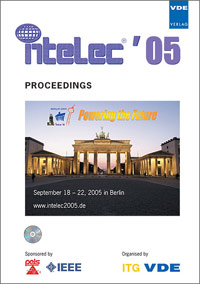PWM Strategies for High-Voltage Isolated DC-to-DC Converter for Rectifier Systems
Conference: Intelec '05 - Telecommunications Conference - 27th International Telecommunication Energy Conference
09/18/2005 - 09/22/2005 at Berlin, Germany
Proceedings: Intelec '05 - Telecommunications Conference
Pages: 6Language: englishTyp: PDF
Personal VDE Members are entitled to a 10% discount on this title
Authors:
Zimmermann, Marília Munhoz da Rocha; Silva, Andréia Solange Goll da; Péres, Adriano; Deschamps, Eduardo (Regional University of Blumenau - FURB, Brazil)
Abstract:
The energy supply systems of telecommunications power stations are based on rectifier units of high power factor, compact with high efficiency. To obtain high power factor it is necessary to use in the ac-to-dc conversion stage a power factor pre-regulator, which leads to an increase of the input voltage levels of the dc-to-dc stage. In order to reduce the voltage efforts over the switches of the dc-to-dc conversion stage, multilevel ZVS PWM dc-to-dc converters are being used. In this paper the results of the behavior analysis of the three-level dc-to-dc converter based on the flying capacitor cell, face to different PWM strategies, observing the voltage share and commutation over its switches. There were identified six PWM strategies that can be applied to this three-level converter. Throughout the preliminary simulations, one of these strategies was selected for a more detailed analysis over the behavior of the dc-to-dc converter with flying capacitor, resulting in the description of the operation principle of the structure and the raising of the mathematical expressions that define the operation of the same. An analysis of the commutation and voltage share behavior over the circuit switches is presented. From the theoretical and experimental results obtained, it can be concluded that the modulation strategy proposed allows the converter to operate with similar conditions as to the use of a conventional modulation strategy, considering that the applied voltage over its switches is equal to half the input voltage, with a simple and low cost drive circuit.


